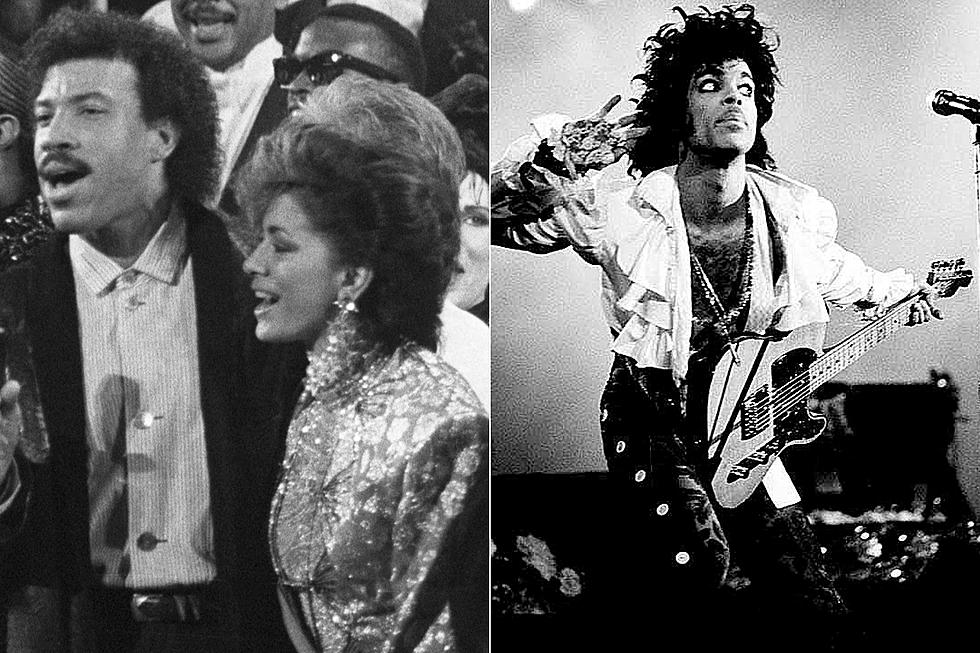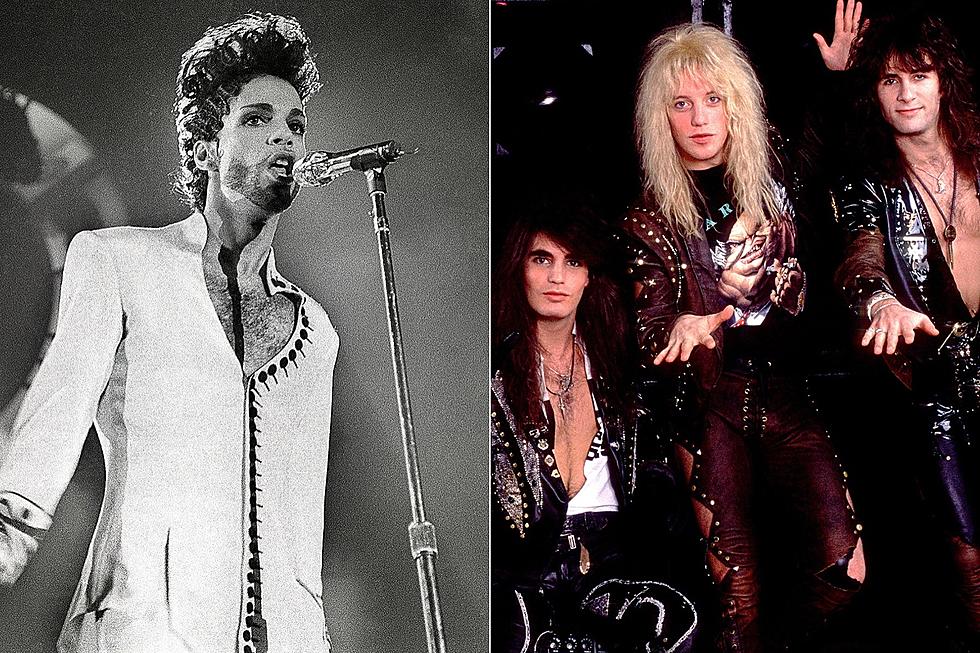
When Prince Replaced ‘The Black Album’ With ‘Lovesexy’
Prince's Lovesexy lived up to the dichotomy inherent in its title. It arrived on May 10, 1988, as neither a continuation of the brilliance found on Sign O' the Times nor the gutsy move his now-shelved Black Album might have been. Prince, quite frankly, had blinked – and that brief pause, that brief moment of public doubt, signaled the fast-approaching end of a decade of creative dominance.
"When 2 R in Love," the only song to appear on both the deleted Black Album and Lovesexy, walked the dividing line. Its tender romanticism never really fit with the angry funk found on the The Black Album, and in turn the song seemed to open up new possibilities once Prince decided to go another way.
Prince's label was probably relieved – despite the costs. (They'd already printed thousands of copies of The Black Album, which had to be scrapped.) Not only had Sign O' the Times been released just six months earlier, The Black Album tended to come off as a grim, much angrier album-length version of "Housequake."
"That was his way of answering those people who said, 'You ain't funky no more,'" former tour manager and Paisley Park Records president Alan Leeds told Rolling Stone in 2016. "It's like, 'Motherfuckers, I can do this in my sleep!' And then he had the so-called epiphany and thought better of it. And his explanation was simply, 'It's an angry album. I made it for the wrong reasons.'"
He attributed this change of heart, in part, to a visit from God. The tour booklet for Lovesexy found Prince admitting that he'd "set out to silence his critics," specifically relying on the color black ("the strongest hue of them all") only to realize that he had allowed "the dark side to create something evil."
Watch Prince Perform 'Alphabet St.'
So, Prince got to work on Lovesexy, quickly producing eight new songs for a replacement project over a two-month period between December 1987 and January 1988. The album emerged as a paean to the other half of his yin-and-yang existence – not sex, but spirituality.
Other than "When 2 R in Love," Lovesexy was essentially recorded in order, and largely alone. He began by offering a clear link to where this journey began: The house-rocking "Eye No," a reworking of "The Ball" from the similarly unreleased Crystal Ball, was followed by an expression of fun-loving sexual braggadocio in his No. 8 hit "Alphabet St." and the busy thump of the follow-up single "Glam Slam." Then "Anna Stesia" – with a title that recalls the Greek word for resurrection – suddenly uncovered the complex emotions that tend to follow that kind of sweaty catharsis.
A musical representation of good versus evil, "Anna Stasia" encapsulated everything he was wrestling with after dumping The Black Album – a musical representation of his struggle with good versus evil, the flesh versus faith. What came before began to seem like an empty exercise in escapism and ego; Prince now wanted something more profound, and more lasting.
From there, Lovesexy takes a more introspective turn. Prince awakened to a different and much deeper kind of desire, even as God and Satan (or, more specifically to the Lovesexy project, Camille and Spooky Electric) waged a fierce battle inside his heart. "Anna Stesia" was when that war is won, at least for the moment.
Watch Prince Perform 'I Wish U Heaven'
Not every song came off as fully formed, likely because of the way Prince rushed to rebuild the album, but his heart was certainly in the right place. "Dance On" made a sharp plea to end gang violence ("We need a power structure that breeds production"), while the titles for final single "I Wish U Heaven" and "Positivity" speak for themselves.
On an extravagant tour that followed, "Anna Stesia" played a similar role, ending the first half of a set list that started out with darker fare before moving into more positive themes. By then, however, this album had already been lost in a wave of instant nostalgia for its quickly deleted predecessor. Lovesexy sold just 750,000 copies before being halted at No. 11, making this Prince's least-successful studio project since For You, his embryonic 1978 debut.
Many argued that he hadn't bested The Black Album, but Lovesexy did something more important for Prince personally: "I was very angry a lot of the time back then," he told Rolling Stone in 1990, "and that was reflected in [The Black Album]. I suddenly realized that we can die at any moment, and we'd be judged by the last thing we left behind. I didn't want that angry, bitter thing to be the last thing."
Prince continued to grapple with these competing impulses for the rest of his career – indeed, for the rest of his life. But, as we found out on lesser releases like 2001's The Rainbow Children, he never struck a more finely tuned balance between them.
Prince Magazine Ads Through the Years: 1978-2016
More From Ultimate Prince










